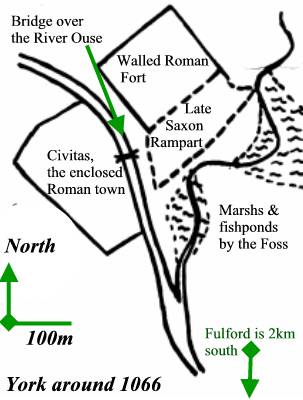
Access to the town from the direction of the battle was restricted. It should have been possible for those retreating from the Battle to prevent king Harald's army from overwhelming the city.
The written evidence is clear that the city was surrendered. It was not unknown for fortified towns to be stormed but it was not the favoured method of fighting.
The explanation is found in the military tradition of the time. The assault and capture of burghs was not uncommon. The creation of fortified strong points had been established by Alfred as part of his administrative and military reforms to combat the Norse invasions.
The were intended as rallying points and to have a deterrent effect.